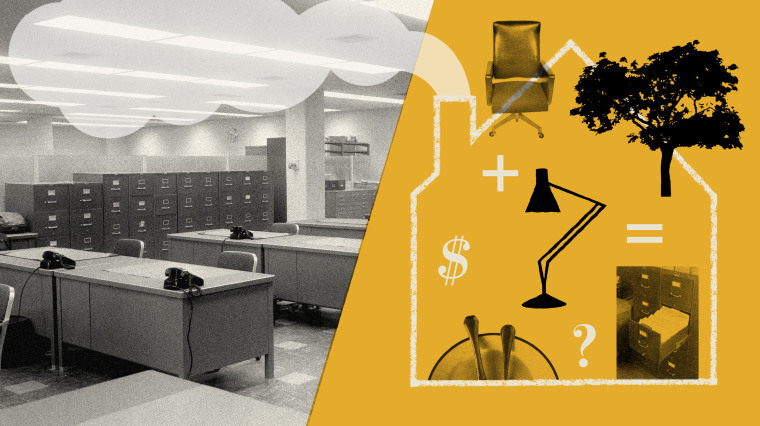Working remotely isn’t new, but the United States has never seen it at its current scale. The shift can benefit workers as well as employers and society writ large — but there can also be costs. When those costs are financial, it’s important that the employer or the government covers the bill for remote workers.
As of October, just over 32 million Americans, or one-fifth, reported telework due to the pandemic, almost three-quarters between the ages of 25 and 54.
Prior to the pandemic, approximately 12 percent of the U.S. workforce worked from home for at least one full day per month. Although not directly comparable, as of October, about 32 million Americans, or one-fifth, reported telework due to the pandemic, and almost three-quarters of those workers are between the ages of 25 and 54. The shift might have been inspired by the coronavirus, but it’s almost certainly something this cohort should be prepared for going forward.
This sudden migration involved a lot of change, from setting up home offices to creating remote hubs using mobile devices and cloud-based applications to moving homes entirely. Many households relocated to less densely populated areas in part to reduce exposure to infection, but also to have more space to live and work in the same location.
Those fleeing the nation’s urban centers have been mainly limited to San Francisco and New York, but other mobility shifts that emerged during the pandemic have been more prevalent. Last summer, many vacation communities saw more of their second-home owners relocate there for the entire summer, or at least for longer stays than usual. A Pew Research Center survey found that 13 percent of Americans who moved relocated to a second home, while another 7 percent relocated to temporary homes, apartments or hotel rooms.
Given the tough times and the hardships nearly all Americans are suffering, you can argue that remote workers — especially workers able to relocate — should be grateful to have a job and the resources to purchase a new home, move to a second home or extend the length of their vacation rental contract. But even though working remotely can benefit employees, employers and the government need to cover a significant portion of the expense when done because of a health emergency or other imposed reason.
Of course, remote work can confer a variety of employee benefits and cost savings by reducing commutes, the need for extensive wardrobes and having to eat out, at the same time it provides the psychological benefits of not having to sit in traffic or wait on a train platform. There can also be a direct bottom-line improvement: potential tax breaks. Full-time employees working remotely may be eligible for a home office tax deduction, albeit not necessarily at the same rate as freelancers. Some estimates suggest remote work can save the typical employee approximately $4,000 per year.
But pandemic remote work also has considerable costs. First, the employee needs to create a dedicated room or space for working. This means, at minimum, a desk, light, chair, office supplies and utilities such as internet access. Depending on the nature of their work, employees may need new electronic devices, cybersecurity measures and IT infrastructure enhancements so they can efficiently access the company’s servers.
To handle these requirements, employers must have clear remote work policies on eligibility, availability, responsiveness to co-worker requests, productivity measures, equipment, technical support, the ergonomics of the employee’s workspace, security and client confidentiality.
But how should we determine who pays for remote work: employees, employers or Uncle Sam?
Economic theory on who bears the costs of job training could provide some insight. In the case of job training, when the skills the employee needs to acquire are specific and nonportable, then employers need to finance the workplace investment. But if the acquired skills are general and thus something the employee will benefit from wherever their career takes them, employees themselves should cover the investment.
Applying this logic to remote work suggests that if the resources needed to work remotely are “general,” meaning they can be used during employment at another company, the employee may need to cover the costs. Examples include desks, lights, paper, printers and pens. However, if a company’s management team views remote work as a benefit they give to reward employees, then employers would need to foot the bill just like any perk they offer.
On the other hand, if the resources to work remotely are “specific” to the employer, meaning they are not transferable from that employer or useful in nonwork activities, then the employer should bear the costs of supplying them, which can take the form of a voucher or a reimbursement.
There’s another factor to take into consideration in calculating how to distribute this burden, however. Since there are societal benefits to remote work — such as less traffic congestion, fewer road accidents, reduced carbon dioxide emissions and more investment in family life and child care — there’s a rationale for the government playing a role in covering the costs.
Further, the fact that the pandemic has and continues to be very disruptive physically and emotionally for many families and their communities provides additional reason for the government to make this investment.
For now, I see a splitting of the costs of working remotely. But if it becomes the “new” normal for a large segment of office workers, the next president and Congress will need to assist with reducing the cost.



